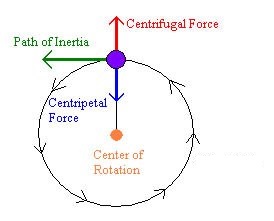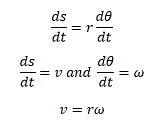Rides That Spin


Carousels
may not be the most thrill inducing rides at
an amusement park but they do help show an
interesting phenomenon.
"Centrifugal force" and
Newton's First Law of Motion

When you're riding on a carousel, you feel as if
your being push away from the center of the ride.
This experience is called centrifugal force, and
it's not actually a force. This phenomenon is an
example of Newton's first law of motion, which
says that an object at rest tends to stays at rest
and an object in motion tends to stay in motion.
For a carousel to go around in a circle there must
be an acceleration pointing toward the center of
the ride. The pushing feeling is a result of your
body wanting to travel in a straight path while
resisting the change in direction caused by the
acceleration of the carousel.
http://piratesandrevolutionaries.blogspot.com/2011/01/dancing-with-waves-deleuzes-concept-of.html
Where do you travel fastest on the ride?
On a carousel where is the fastest part of the
ride. It depend on the definition of fast. Since a
carousel spins we need to look at rotational
motion. If we look at the angular velocity which
is the change in degrees over change in time, it
is the same for every point on the ride since
to complete a circle, every point on the rigid
body has to travel 360 degrees. However not every
point travels the same distance. This makes sense,
because a point on the outer edge has to travel a
distance equal to the circumference while a point
near the center of the ride has to travel a
smaller distance in the same amount of time. The
relationship between the distance traveled and
angular displacement is given by:

where s is the distance
traveled, r is the radius and theta is the
angle in radians. If you take the derivative
of both sides you get:

Since the radius increases as you move away from
the center, this means that the tangential velocity
is greatest on the outer edge of the carousel.
Gravitron
Another ride that spins is the Gravitron
and it is similar to a carousel accept the
"centrifugal force" felt by the passengers is
significantly stronger. The rapid rotation of this
ride allows you to defy gravity as you stick to the
wall, let's look at why this happens.
If you look at a free body
diagram, the magnitude of the normal force and
the angle of the slant effects the frictional
force in the y-component. As the velocity of the
ride increases, the normal force felt on the
passengers also increases and this increases the
frictional force. If the friction force reaches
a high enough magnitude, the vertical component
of the friction force will balance out the force
of gravity, which will allow that person to not
touch the ground of the ride.